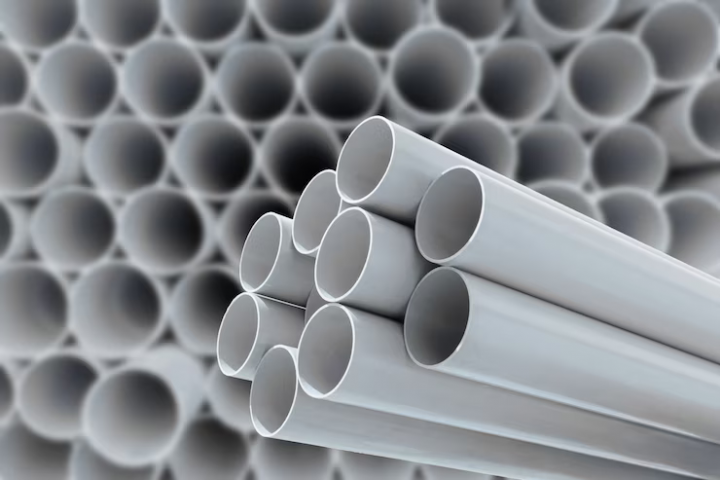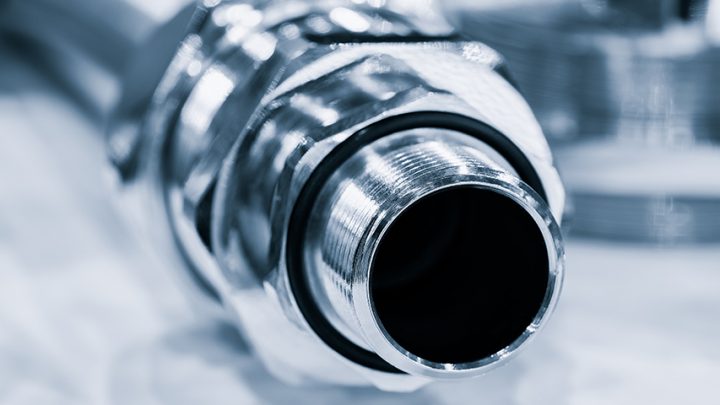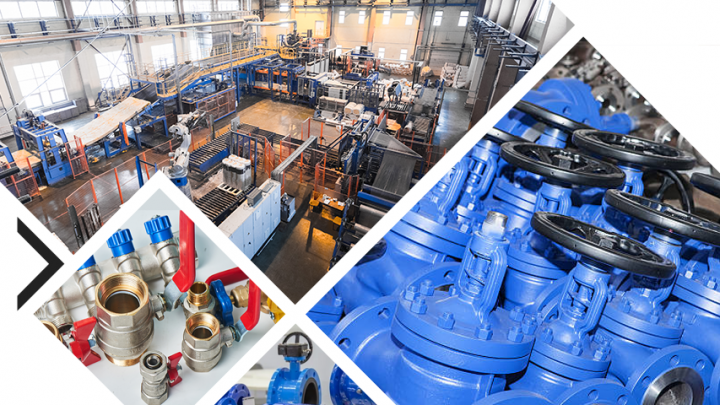About Valves
Industrial valves are ubiquitous in numerous industries, serving as essential components for controlling the flow of liquids, gases, and other substances within a system. These devices come in a wide array of types, each designed to perform specific functions in diverse applications. Understanding the various industrial valve types and their applications is crucial for efficient and safe operations across multiple industries.
In this comprehensive guide, we will explore some of the most common industrial valve types, their working principles, and the industries where they find extensive use.
1. Gate Valves
Working Principle: Gate valves operate by raising or lowering a gate (a flat or wedge-shaped disc) to control the flow. When fully open, they provide a straight-line flow with minimal pressure drop.
Applications:
– Water and wastewater treatment
– Oil and gas industry for isolation and on/off control
– Refineries and chemical plants
– Power generation facilities
– Mining operations
2. Ball Valves
Working Principle: Ball valves use a spherical closure element (the ball) to regulate flow. When the ball is rotated, it aligns with the valve body’s passageway to permit flow or closes to shut it off completely.
Applications:
– Petrochemical industry
– Pharmaceuticals
– Food and beverage processing
– HVAC systems
– Natural gas distribution
3. Butterfly Valves
Working Principle: Butterfly valves have a disc that rotates 90 degrees within the pipe to control flow. When the disc is parallel to the pipe, it allows full flow, and when perpendicular, it blocks flow.
Applications:
– Water and sewage systems
– Air conditioning and ventilation
– Shipbuilding
– Chemical processing
– Food and beverage production
4. Check Valves
Working Principle: Check valves allow flow in one direction only, preventing backflow. They employ various mechanisms, including swing, lift, or ball checks, to achieve this.
Applications:
– Plumbing systems
– HVAC equipment
– Water treatment plants
– Petroleum and chemical processing
– Power generation
5. Pressure Relief Valves
Working Principle: Pressure relief valves automatically release excess pressure from a system to prevent damage. They open when the pressure exceeds a preset limit and close when it returns to the acceptable range.
Applications:
– Boiler systems
– Pressure vessels
– Hydraulic systems
– Steam generators
– Natural gas pipelines
6. Control Valves
Working Principle: Control valves regulate the flow of fluids by varying the size of the flow passage. They use actuators (pneumatic, electric, or hydraulic) to modulate the valve position based on control signals.
Applications:
– Process control in chemical plants
– HVAC systems
– Oil refining
– Power generation
– Water treatment facilities
7. Plug Valves
Working Principle: Plug valves use a cylindrical or conical plug with one or more passages to control flow. Rotating the plug aligns the passages with the pipe to allow flow or closes them to stop it.
Applications:
– Petrochemical industry
– Pharmaceutical manufacturing
– Food and beverage processing
– Wastewater treatment
– Pulp and paper industry
8. Diaphragm Valves
Working Principle: Diaphragm valves employ a flexible diaphragm to regulate flow. When the diaphragm is pressed against the valve seat, it stops flow, and when it’s lifted away, it allows flow.
Applications:
– Pharmaceuticals
– Biotechnology
– Water treatment
– Chemical processing
– Semiconductor manufacturing
9. Globe Valves
Working Principle: Globe valves control flow by moving a plug (disc) into or out of the valve seat. They provide precise flow control but create more pressure drop than some other valve types.
Applications:
– Steam systems
– Hydraulic systems
– Boiler feedwater control
– Cooling water systems
– Fuel oil systems
10. Solenoid Valves
Working Principle: Solenoid valves use an electromagnetic coil to control the flow of liquids or gases. When energized, the coil lifts a plunger or opens a pilot valve, allowing flow.
Applications:
– Automation and control systems
– Irrigation systems
– Refrigeration and air conditioning
– Medical devices
– Automotive industry
11. Needle Valves
Working Principle: Needle valves provide precise flow control by using a slender, tapered needle-shaped plunger to restrict flow through a small orifice.
Applications:
– Laboratory equipment
– Pressure gauges and instruments
– Flow metering
– Hydraulic systems
– Fuel and chemical lines
12. Pinch Valves
Working Principle: Pinch valves use a flexible rubber sleeve to control the flow of materials. When compressed, the sleeve collapses, stopping flow, and when released, it reopens.
Applications:
– Mining and mineral processing
– Food and beverage processing
– Pharmaceutical industry
– Wastewater treatment
– Bulk material handling
13. Knife Gate Valves
Working Principle: Knife gate valves use a sharp-edged gate to cut through the flow of thick, viscous, or solid-laden fluids. They are ideal for handling slurries.
Applications:
– Pulp and paper industry
– Mining and minerals processing
– Chemical and wastewater treatment
– Power generation
– Steel and cement industries
14. Double Block and Bleed Valves (DBB Valves)
Working Principle: DBB valves combine two seating surfaces to create a double barrier against leakage. They have a bleed valve between the two blocks to release any trapped fluid, providing additional safety.
Applications:
– Oil and gas pipelines
– Chemical processing
– Petrochemical plants
– Offshore drilling
– High-pressure systems
15. Cryogenic Valves
Working Principle: Cryogenic valves are designed to handle extremely low temperatures and are often used in applications involving liquefied gases such as oxygen, nitrogen, or liquefied natural gas (LNG).
Applications:
– Cryogenic storage and transport
– Aerospace industry
– Medical equipment
– Food processing (e.g., flash freezing)
– Research laboratories
Conclusion
Industrial valves are indispensable components in countless industries, each type carefully engineered to perform specific functions with precision and reliability. Understanding the right valve type for a given application is crucial for achieving efficient and safe operations across sectors as diverse as oil and gas, chemical processing, water treatment, and more. By selecting the appropriate valve type, industries can optimize processes, enhance safety, and ensure the smooth flow of materials and fluids within their systems.
For businesses seeking reliable sources of industrial valves, Enggpro offers a valuable platform to connect with reputable valve manufacturers and suppliers. Whether you require gate valves, ball valves, butterfly valves, or any other type for your specific needs, Enggpro simplifies the procurement process, facilitating seamless communication and efficient sourcing. Trust Enggpro to be your dependable partner in finding the right valves for your industrial applications.



